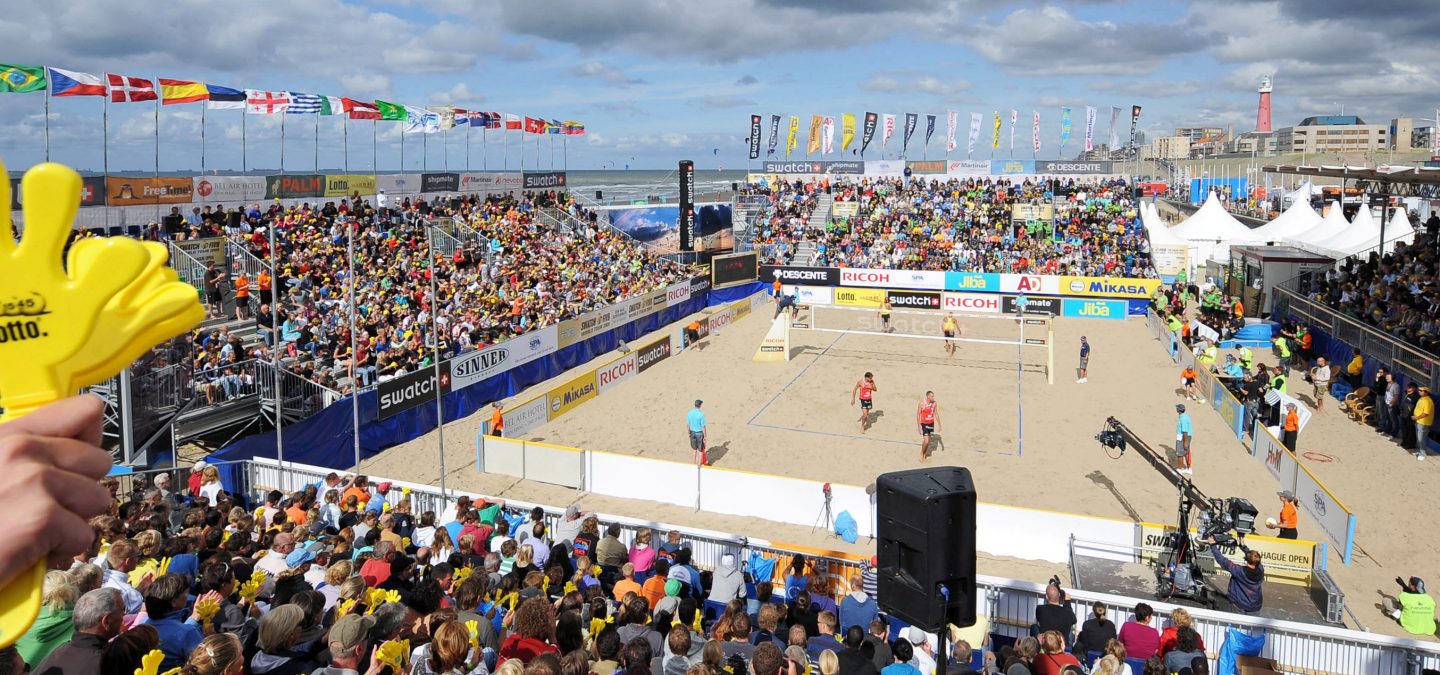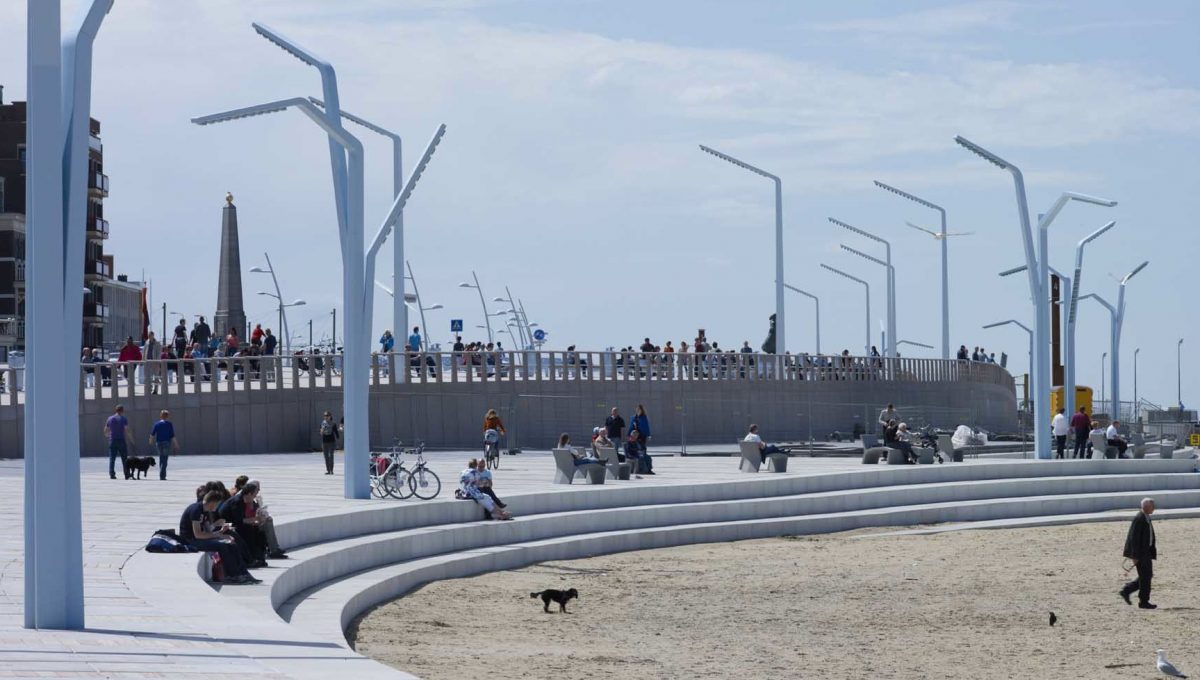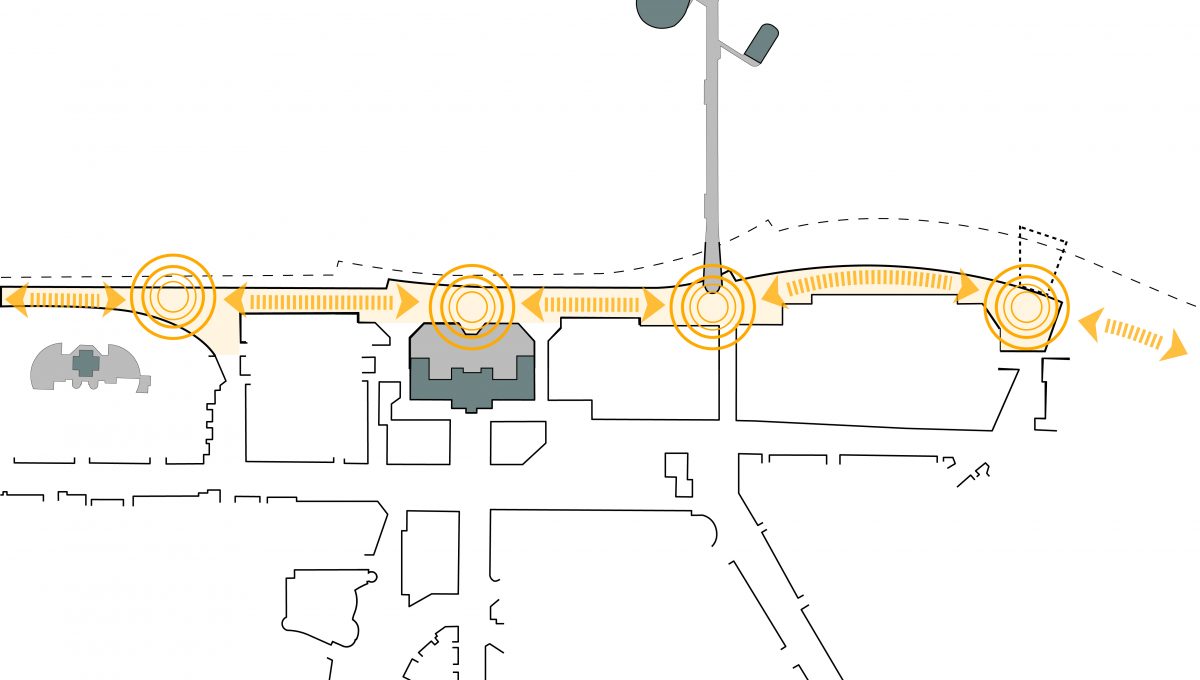
Keep up with our latest news and projects!

Serving all of the users of the Scheveningen boulevard everywhere, all the time, is wishful thinking. But it’s actually not necessary, says urban developer and area coordinator at the municipality of The Hague, Demet Voûte: ‘Everyone has their own spot, even though as a municipality we didn’t specifically plan it that way. Nor should we want to, in my opinion. These kinds of things take care of themselves.’
In 2015, the municipality of The Hague launched its ‘Healthy Coast’ project, the main aim of which was to bring back that seaside feeling in the public space. The project consisted, on the one hand, of making the public space in the beach area by the pier clean, safe and cohesive, and, on the other hand, of renovating the boulevard step by step.
‘The Spanish architect Manuel de Solà-Morales designed the part between Sea Life and the harbour,’ explains Demet Voûte, urban developer and area coordinator at the municipality of The Hague. ‘Now that the South Boulevard is finished, it’s suddenly clear how worn-down the area around the Kurhaus is. The Hague is the international city of peace and justice. There are many international organisations here, and we want to use the power of the landscape to enhance the city’s appeal. Creating the conditions for new organisations to settle here starts with the design. Everything has to be right. Take accessibility, for example: it takes too long to get to the boulevard. Public transport has to be improved, as does access for slow traffic. We have to intercept cars much earlier. We’re working on an ambitious plan to achieve that.’

the boulevard is undoubtedly a complex task, among other reasons because the users are so diverse: expats have very different wishes than tourists or the people living behind the boulevard. Nevertheless, that’s not an insurmountable problem, according to Voûte: ‘When it’s finished, it does of course have to be based on one design, but it will have many area-specific characteristics. The beach area of Scheveningen near the pier, for example, is extremely touristy with attractions such as the Kurhaus and, in the near future, Legoland. You won’t find the average city resident there. They prefer to hang out on Zuiderstrand, Kijkduin or at Scheveningen Harbour. That’s where people do their sports, and they, in turn, attract a crowd that likes to belong to and check out the scene. There’s a much different, much more relaxed vibe there. The middle part of the boulevard is a kind of transition zone where there are fewer cafés and restaurants, and where the panoramic vistas invite people to walk and stroll around. Zwarte Pad has more of an Ibiza flavour to it. So everyone can claim their own spot, even though as a municipality we didn’t specifically plan it that way. Nor should we want to, in my opinion. These kinds of things take care of themselves, as long as the design gives you the space to claim your spot.’
 ©️ Robin Bakker
©️ Robin Bakker
On the north side, for example, you regularly come across ‘stepping stones’, places where children can play, where there’s a bench to sit on, or a spot where there’s something worthwhile for tourists to take a picture of. ‘The stairs with the sculptures, for example,’ Voûte says, ’that has really become a great playground for children.’ Other stepping stones are going to be placed in the vicinity of the Kurhaus, which is going to be renovated in nineteenth-century style, near the stairs to the pier and at the end of the boulevard. ‘A large pavilion will be built there with international appeal. Anyone wanting to make an iconic picture of Scheveningen in the future, will take a photo of that.’
The basic idea underlying the design is that everyone must be able to find an agreeable place to be on the coast. ‘It’s typical of The Hague,’ Voûte says. ‘We’re a large, international city consisting of all kinds of separate neighbourhoods with their own personality. The fact that not everything appeals to everyone is fine, but there does have to be some cohesion, and it’s important that no one feels left out. The design of the boulevard plays a key role in that respect. The current boulevard is straight, but soon it will become curved, in line with the ideas of Solà-Morales. Before he made his design, Solà-Morales carried out a cultural-historical analysis to discover what would suit Scheveningen/The Hague. One of the things that it revealed was that the coastline used to have beautiful bends in it. To bring back these cultural-historical elements we need to revisit the spirit of the place. The design of the boulevard connects landscape and ecology, economics and water in an attractive way that relies on coastal morphology and the history of the place.’
 Steppingstones
Steppingstones
When asked, Voûte agrees that design can also be the enemy of the users. ‘If you don’t talk to the users often enough beforehand, then bad things will happen,’ she says. To prevent that, the municipality is going to talk extensively with the users. ‘Whereas the urban developer used to do the work because he or she understood exactly what was going on,’ Voûte says, ‘today we go into the city at a much earlier stage, which we call “making the city together.” We gather information and we involve people in the making of plans. We consider people’s ideas genuinely useful and at the same time people feel like they’ve been listened to. As a result, the design belongs to the people and not to the municipality.’
One of the groups that the municipality works closely with is the Beach City Foundation. Once the northern part of the boulevard in Scheveningen has been completed, then the Beach City project will be launched, which will provide the Solà Morales-boulevard with a new amenity. Beach City focuses mainly on health, sports innovation and seaside sports. The goal is make this the sports beach of Europe. There are representatives in the Foundation from beach and water sports, as well as owners of beach cafés and restaurants.
‘You can tell that sports is becoming more and more popular, especially surfing,’ Voûte says. ‘Before we started to develop starting points, we asked the foundation to develop a programmatic vision. They could use it to express exactly what they needed as sportsmen and entrepreneurs, while we developed the sports beach. We incorporated many of these findings into our Beach City Developmental Plan, and now that it’s our turn to tender, the foundation is one of the organisations that will evaluate the proposals.’
Of course there were bones of contention too. ‘Everyone has their own interests and considerations,’ Voûte explains. ‘Ultimately we always ask ourselves as a municipality: is this something that will benefit the entire city? That’s where the friction arises. And more generally speaking: you go to a specific spot and talk to the residents in order to find out what they want. But in the end, as a municipality, you also have to step back and ask yourself: will the rest of the city benefit from it?
Voûte and her colleagues have been working closely with developers in the northern part of the boulevard. ‘We’ve had sessions with a developer called Sense, for example, about the area around Legoland. By the way, the market parties actually involve the residents themselves: they organise residents’ evenings, to which we are also invited, though we’re not asked to do anything. That, I think, is a really good development.’
Keep car traffic as close to the boulevard as possible. Try to intercept cars as early as possible and ensure that there are good facilities for public transport and slow traffic.
Interested? Join The City At Eye Level and share your story!
Discover more